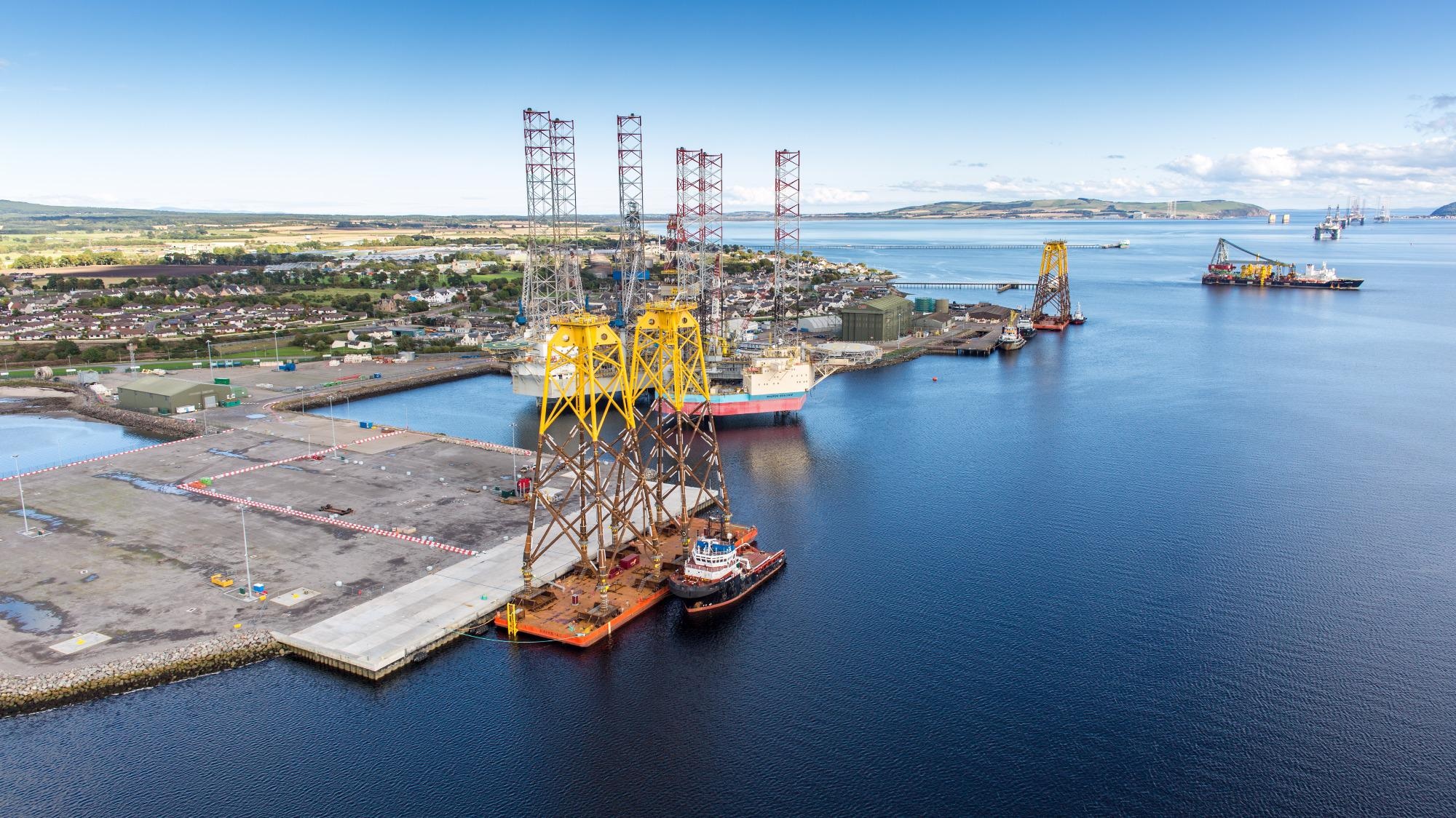The PowerHouse, a Highlands global centre of excellence launched earlier this year by Opportunity Cromarty Firth to work on research into innovative renewable energy technologies, has secured its first project.

Image Credit: Opportunity Cromarty Firth
Led by manager Mina Hanna, the Powerhouse is joining forces with the Port of Cromarty Firth, the University of St Andrews, ZEM Fuel Systems and Low Emissions Resources Global to examine ways of decarbonising the maritime transport sector.
The project will test how green hydrogen technologies can be used to minimise the maritime industry’s environmental footprint, with the aim of developing a cleaner fuel to be used out at sea.
Hydrogen is seen as such a clean alternative fuel, but hydrogen gas has low volumetric energy density under standard conditions. Therefore, an efficient liquid hydrogen carrier is needed such as ammonia, which could act as the perfect “hydrogen derivative fuel” due to its sufficient energy density and availability of existing large infrastructure.
The project aims to develop a novel Solid Oxide Fuel Cells (SOFCs) system to efficiently convert ammonia as a liquid hydrogen carrier directly into water and nitrogen, yielding electric power. Over seven months, project partners will conduct trials to monitor performance at scale of the SOFCs system and establish longer-term durability testing.
If successful, this system will lead to major advances towards decarbonising the maritime sector in a bid to help Scotland and the UK meet its net-zero climate targets.
This initial project is set to last until March 2022. It is being funded by the UK Department for Transport’s flagship Clean Maritime Demonstration Competition, delivered in partnership with innovation agency, Innovate UK.
The Powerhouse, based at Tern House, in Alness Point Business Park, Easter Ross, was launched with the ambition of ensuring Scotland becomes a world leader in future renewable energy technologies by bringing together the foremost specialist groups in the country and beyond.
Mina Hanna said: “It is great that we can announce this fantastic joint research project with our partners which is expected to lead to major advances towards decarbonising the maritime sector to help Scotland and the UK achieve their net-zero climate obligations.
“The PowerHouse forecasts significant opportunities in maritime innovation, with hydrogen derivative fuels expected to play a major role in decarbonising the sector.”
Bob Buskie, Chief Executive of the Port of Cromarty Firth, said: “This project is fantastic news for the Powerhouse and the Port is proud to be involved in it. The opportunities presented by green hydrogen are vast and its importance to not only the future of the maritime industry but the UK as a whole cannot be underestimated. Together with our partners, we hope this project can change the face of the maritime industry, and make it an exemplar of clean, green transportation methods for decades to come.”
Vinay Mulgundmath, Director at ZEM Fuel Systems, said: “ZEM Fuel Systems is delighted to be leading this important project which is focused on developing a fuel cell propulsion system for the marine sector. Additionally, we are exploring the market demand for this technology and supply chain development opportunities for the UK as this work progresses.”
Martin Schweighauser, CEO of LERG, said: “LERG's development of Proton Conducting Ceramics for SOFC & SOEC products – for the production of both hydrogen and electricity – is on a path to playing a significant role in the future of green energy. The challenges in the maritime and overall green energy-based transportation sector must be urgently addressed, and the collaborative role LERG will play in this project will help to move us all closer to that end.”
John Irvine, Professor at the University of St Andrews, said: “Emissions from maritime are a highly significant contributor to both greenhouse gases and air pollution that has barely been addressed to date. It is critical that we urgently work on appropriate decarbonisation solutions for this sector. Ammonia offers several advantages in this context, it is a dense and transportable store of hydrogen providing the energy needs for long distance freight. Used in conjunction with a fuel cell system, we can create electrical energy without generating nitrogen oxides that pollute our environment.
“The University of St Andrews is strongly supportive of The Powerhouse initiative. The Cromarty Firth project on producing green hydrogen at scale is critically important to advance global net zero ambitions. Underpinning this is the need to train lots of skilled people to implement these new technologies, without these technicians there can be no solution.”